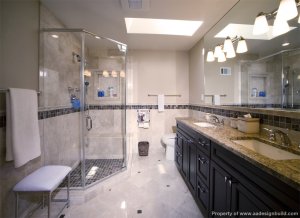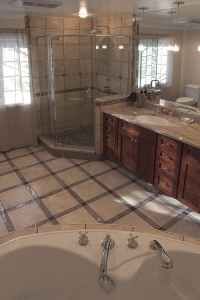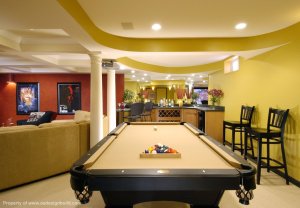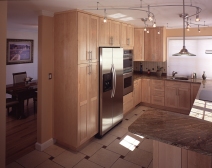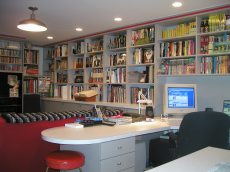Budgeting Your Washington DC, Bethesda, Chevy Chase Bathroom Remodeling Project
Washington DC, Bethesda, Chevy Chase bathroom remodeling carries one of the highest returns on investment, so it’s a smart way to add value to your property, get more on resale, and give your home a deserving facelift.
Knowing how to budget for renovations will help you establish priorities for your project and set reasonable expectations. Bathroom remodeling in Washington DC, Bethesda, Chevy Chase will cost slightly more than in some other parts of the country, such as the south or Midwest.
According to Remodeling magazine’s 2009/2010 Cost vs. Value Report, the differences between a mid-range and upscale remodel are considerable. For example, Washington DC, Bethesda, Chevy Chase bathroom remodeling could look like the following:
- A mid-range remodel costs nearly $15K and will recoup just over 71% of its cost at resale. This type of renovation updates an existing 5-by-7-foot bathroom with all new fixtures, including: porcelain-on-steel tub with ceramic tile surround, temperature and pressure-balanced shower control, standard white toilet, solid-surface vanity counter with integral sink, recessed medicine cabinet with light, ceramic tile floor, and vinyl wallpaper.
- An upscale version will run around $48.5K and is expected to recoup about 64% of that on resale. Upscale renovations include the expansion of the existing bathroom and relocation of all fixtures. Common features include ceramic-tile shower with body-spray fixtures and frameless glass enclosure, customized whirlpool tub, stone countertop with dual sinks, ceramic tile flooring, custom cabinetry and lighting, HVAC system extension, in-floor heating and heated towel bars.
Now, apply this knowledge to your current budget for Washington DC, Bethesda, Chevy Chase bathroom remodeling. If you don’t have enough to spend on an upscale project, here are five major areas that you can prioritize for a project that accommodates your situation:
- Construction zone: Compare the cost of a general contractor with doing the project on your own. For bathroom remodeling in Washington DC, Bethesda, Chevy Chase this includes the demolition, buying materials, and the time it will take to get permits and oversee the work. If you decide to employ a contractor, be sure to check the company’s experience of successfully delivering similar projects.
- Labor: In the case of Washington DC, Bethesda, Chevy Chase bathroom remodeling, changing the layout of the room will cost more money than sticking with the original plan. Switch the plumbing, lights, or other fixtures of the bathroom and you’ll drive up costs. However, by making even small layout adjustments, you can have a better looking and more comfortable bathroom.
If you must move some things, pick and choose which are most important.
- Fixtures: It’s tempting to upgrade all of your fixtures to high-end models, but try to compromise. That must-have spa shower is much more affordable if you go with a lower-end sink or toilet.
- Tiling: There are two costs associated with tiling in bathroom remodeling, especially in Washington DC, Bethesda, Chevy Chase: the tile itself and the amount of labor it takes to install it. Consider using expensive tiles as accent pieces, or limit tile to the tub surround and floor. This will give you the look you want, but at a lower overall cost.
- Countertops: The choices in modern-day countertops are enormous, which means there are some exquisite materials at affordable prices, too. If you’re smart about it, you can cover a lot of surface for much less than you would be able to do in a larger area of the home, such as the kitchen.
Bathroom remodeling in the Washington DC, Bethesda, Chevy Chase area can be a fun and exciting experience, but you must plan for it financially. Be honest with yourself about how much you can spend, arrange your priorities, and then speak with a knowledgeable, Washington DC contractor that can not only design a beautiful bathroom but orchestrate a successful project.


